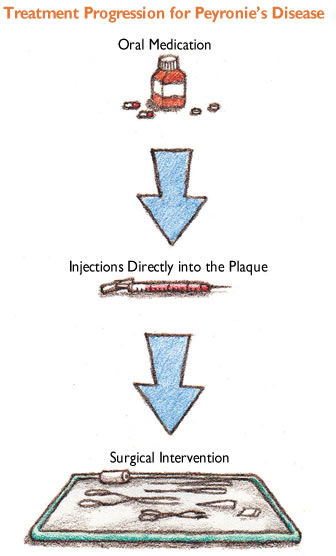|
Understanding Peyronie’s DiseaseJosiah Nelson, MD Peyronie’s Disease was first described by François de la Peyronie, a French surgeon. Peyronie’s Disease is characterized by an inflammatory plaque, or hard lump, that forms within the penis. This lump is often initially painful, and as the scarring progresses, it can cause an abnormal bend to the penis. This lump usually forms over several weeks, but occasionally can occur over a much shorter time frame. The bent penis often makes sexual intercourse difficult and can lead to shortening of the penis. As one might expect, this may disrupt a couples’ physical and emotional relationship.
A visit to your physician and an exam will confirm the diagnosis of Peyronie’s Disease. Treatment during the initial period of plaque formation typically consists of oral medications: Vitamin E, colchicine, tamoxifen and pentoxifylline may be tried, but often times have limited success. Traction devices have also been described in the treatment of Peyronie’s Disease. The most successful form of treatment in the initial period involves injections of medications directly into the plaque to try to stabilize it. This is done through a series of injections over a three month period. Verapamil has shown significant success reducing pain, as well as reducing curvature of the penis when injected into the plaque. Once the plaque is stabilized, if there is still a problematic curvature, surgical intervention is often recommended. Removal of the plaque, straightening of the penis or even placing a prosthetic device may be used. Treatment is dependent on the degree of curvature, the size of the plaque and any underlying medical conditions such as erectile dysfunction.
Peyronie’s Disease is an under appreciated disease that causes significant physical distress and emotional difficulty for patients and their partners. If you would like more information on the treatment or evaluation of Peyronie’s Disease, contact Western Wisconsin Urology at 715-835-6548, www.eauclaireurology.com.
Dr. Josiah Nelson – Western Wisconsin Urology |



 There are several factors which are suspected to be causes of Peyronie’s Disease.
There are several factors which are suspected to be causes of Peyronie’s Disease.